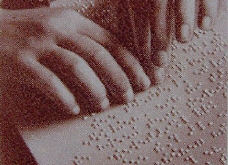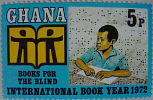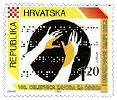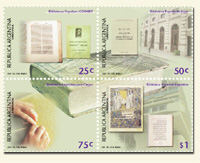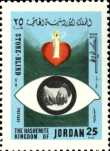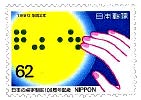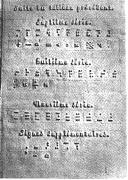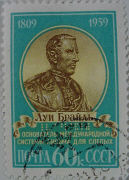Louis Braille was born on 4th January, 1809, at Coupvray,
near Paris. At three years of age an accident deprived him of his sight,
and in 1819 he was sent to the Paris Blind School-which was founded by
Valentin Hauy. Here he made rapid progress in all his studies. He learned
to read by embossed Roman letter, which was exclusively used at the time
and which continued to be popular for fifty years in that country and the
UK, and is still used in many schools in America.
In 1826, now a promising organist in a Paris church, Braille was elected
Professor at the Institution. Both as pupil and teacher he spent most of
his leisure trying to find a system by which the blind could write in relief.
One which had been invented by M. Barbier appeared the most promising.
M. Charles Barbier was an officer of Artillery, who, being rich and philanthropic,
was interested in the blind, and did what he could to promote their education.
In 1825, he suggested embossing by means of a point method, the character
containing 12 dots, 6 high and 2 wide, arranged in a rectangle. The character
thus obtained was large and unwieldy, though capable of an almost unlimited
number of combinations. This was also used by the military and was called
Night Writing. It was used by soldiers to communicate after dark.
The problem with the code was that the human fingertip could not feel
all the dots with one touch. Louis Braille created an improved version
based on a cell of six dots (the well-known 3 X 2). This crucial improvement
meant that a fingertip could detect the entire cell with one impression
and move rapidly from one cell to the next. On this basis Braille was the
first who devised a practical scheme for printing and writing in tangible
form, suitable to the tactile capacity of all. This was in 1829. After
some slight modification it reached its present form in 1834, and is the
system which has since borne his name.
The period 1825 to 1835 appears to have been a period of universal activity in matters relating to embossed literature and printing. In Britain, there were Gall, Alston, Moon, Fry, Frere, and Lucas, all bringing out their own peculiar types, and each having his own partisans. In America there were Mr. Friedlander, Dr. Howe and others. About 1859 the Braille system was introduced to America and was taught
with some success at the St. Louis School for the Blind. In 1868, the British
and Foreign Blind Association came into existence and having brought Braille
into this country, gave to it a powerful impetus by printing and disseminating
books in that type. This system of embossed writing gradually came to be
accepted throughout the world as the best form of written communication
for the blind community, and it remains basically as he intended.
Over time, there has been some modification of the Braille system, particularly the addition of contractions representing groups of letters or whole words that appear frequently in a language. The use of contractions allows faster Braille reading and helps reduce the size of Books and documents making them less cumbersome. Today, many books, magazines and other documents are available in Braille including Gas bills and bank statements as well as the television listings. Louis Braille died in 1852.
The above information is derived from History of Reading
for the Blind.
|
||||||||||||||||||
 Braille
Braille
